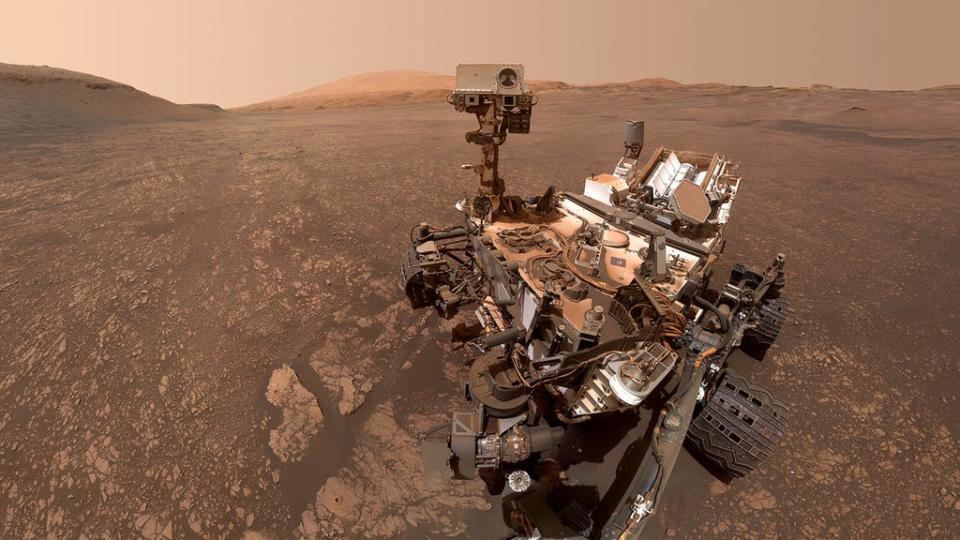‘Unusual’ carbon found on Mars could have come from past life on red planet, Nasa study suggests

Unusual carbon found on Mars could tell us about the history of the red planet – if scientists can find an explanation for where it came from.
Scientists say there are three possible explanations for the material found on Mars, but each of them are “unconventional”. One explanation could include alien microbial life, though scientists say they are remaining “cautious”.
It either came from cosmic dust, the degradation of carbon dioxide by ultraviolet, or the same process happening to biologically produced methane.
But whatever the explanation, those processes are unlike anything that generallyyhappens on Earth, scientists say.
The new research comes from Nasa’s Curiosity rover, which has been exploring Mars since 2012. Scientists looked at samples taken from six different exposed locations on the planet’s Gale Crater, including one on an exposed cliff.
Carbon has two stable isotopes – 12 and 13 – and scientists looked to understand the relative amount of each in the samples. By doing so, they can understand more about the carbon cycle on the planet, even long in its history, and in so doing find out the story of Mars.
They found that the samples were “extremely depleted”, or lacking, in carbon 13. That requires an explanation, and led scientists to the three possible stories – each of which would be very unusual on Earth, and could change our understanding of Mars’s past.
“All three possibilities point to an unusual carbon cycle unlike anything on Earth today,” said Christopher H House, professor of geosciences at Penn State.
“But we need more data to figure out which of these is the correct explanation. It would be nice if the rover would detect a large methane plume and measure the carbon isotopes from that, but while there are methane plumes, most are small, and no rover has sampled one large enough for the isotopes to be measured.”
The dust cloud explanation is based on the fact that the solar system passes through a galactic molecular cloud every couple of hundred millions of years, though it does not leave much dust behind. For any to be around for Curiosity to sample, the cloud would have had to cool down the planet so that it created glaciers, and then left the dust on top of the ice before it melted and left the dirt with the carbon behind.
But the ere is little evidence that Gale Crater did have glaciers. And so while possible, further research would be required to back up the theory.
Another explanation is that carbon dioxide is being converted to organic compounds like formaldehyde by ultraviolet light. Such a possibility has been predicted before, but not strongly enough to show definitely one way or another.
The third possible explanation is that more biological, including the possibility of alien life. Mars might once have had plumes of methane being produced – perhaps by microbes, which would be the obvious explanation on Earth – which would have left behind the signature.
“All three possibilities point to an unusual carbon cycle unlike anything on Earth today,” said House. “But we need more data to figure out which of these is the correct explanation.
“It would be nice if the rover would detect a large methane plume and measure the carbon isotopes from that, but while there are methane plumes, most are small, and no rover has sampled one large enough for the isotopes to be measured.”
The research is described in an article, ‘Depleted carbon isotope compositions observed at Gale crater, Mars’, published today in the Proceedings of the National Academy of Sciences.

